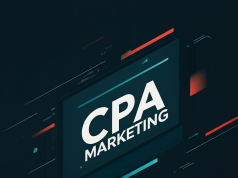Ultimate Guide to Digital Advertising Pricing Models: CPM, CPC & CPA

Understanding and Comparing Pricing Models
What Is CPM (Cost Per Mille)?
CPM, or Cost Per Mille, is a pricing model where advertisers pay a fixed rate for every thousand impressions of their ad. Often used in brand awareness campaigns, CPM ensures your creative reaches a broad audience. This model is ideal if your primary goal is exposure rather than immediate clicks or conversions. With CPM, you know exactly what you’ll spend for each block of impressions, making budgeting predictable.
However, CPM doesn’t guarantee engagement. An ad can rack up thousands of impressions without a single click or conversion. To mitigate this risk, refine your audience targeting, optimize ad placement, and craft compelling visuals and copy. By marrying strong creative assets with precise audience segmentation, CPM campaigns can deliver substantial reach while maintaining healthy viewability rates.
What Is CPC (Cost Per Click)?
CPC, or Cost Per Click, is one of the most widely adopted pricing models in performance marketing. Rather than paying for impressions, advertisers pay each time a user clicks on their ad. CPC aligns spending directly with user engagement, making it easier to track return on investment and optimize campaigns in real time.
High-traffic websites and search engines often leverage CPC auctions to prioritize ads that drive the highest click-through rates. Since you only pay for clicks, CPC can be a cost-effective approach for driving targeted traffic to landing pages, product pages, or lead-capture forms. Keep in mind, click fraud and accidental clicks are potential pitfalls; monitoring for anomalous activity and employing click verification tools can help protect your budget.
What Is CPA (Cost Per Action)?
CPA, or Cost Per Action (also known as Cost Per Acquisition), charges advertisers only when a specific action occurs—like form submissions, product purchases, or sign-ups. This model places the risk on the publisher or ad network to deliver high-quality, conversion-ready traffic, making it a favorite for performance-driven advertisers.
Because publishers bear more responsibility under CPA, rates can be higher than CPM or CPC. Yet, CPA delivers the clearest measure of campaign success: you pay only when you achieve your goal. Whether you’re seeking new customers, webinar attendees, or software trials, CPA campaigns can ensure that every dollar spent brings you measurably closer to your business objectives.
Choosing and Optimizing the Right Model

Factors to Consider When Selecting a Model
Choosing between CPM, CPC, and CPA hinges on several variables: campaign objectives, budget constraints, target audience behavior, and the stage of your marketing funnel. Brand-awareness campaigns often benefit from CPM’s broad reach, while direct-response efforts thrive on CPC or CPA’s performance-based structure. Map your campaign goals to the model that aligns spending with desired outcomes.
Audience sophistication also plays a role. If you have precise retargeting lists or high-intent segments, CPA can yield strong ROI because conversions are more likely. For top-of-funnel outreach where user intent is unclear, CPM can cast a wider net and build initial familiarity.
Budget and Bid Strategy Considerations
Ad budgets should reflect the expected value of each model. For CPM, calculate the cost per thousand views against projected impression volumes to forecast reach. For CPC, estimate your target cost per click based on historical click-through rates and average order values. Under CPA, determine the maximum cost per acquisition you’re willing to pay by analyzing your customer lifetime value (LTV) and profit margins.
Next, choose between automated and manual bidding. Automated bidding algorithms can optimize for specific goals—like target CPA or target ROAS—leveraging platform data to adjust bids in real time. Manual bidding provides more granular control but demands continuous monitoring and adjustments.
Attribution, Tracking, and Measurement
Precise measurement is critical across all pricing models. Implement consistent tracking through pixels, UTM parameters, and server-side analytics to attribute clicks and conversions correctly. Multi-touch attribution models can reveal how various channels and touchpoints contribute to final actions, informing budget allocation decisions across CPM, CPC, and CPA.
Ensure you have robust fraud detection in place—especially for CPC and CPA campaigns—to guard against invalid clicks, fake sign-ups, or fraudulent leads. Regularly audit your traffic sources, leverage third-party verification tools, and set up conversion thresholds to flag suspicious activity.
Optimization Best Practices for Each Model
For CPM campaigns, focus on ad frequency capping to avoid audience fatigue. Rotate creatives to keep messaging fresh, and test different formats (banner, native, video) to identify top performers. Leverage geo-targeting and device targeting to fine-tune reach and maximize viewability where your audience spends the most time.
With CPC, continuously test ad copy, headlines, and call-to-action buttons. Use A/B split tests to compare landing page variants—different layouts, form lengths, and incentive offers. Monitor your quality score or relevancy score on ad platforms; improving quality metrics can lower your cost per click.
CPA campaigns demand a razor-sharp focus on conversion rate optimization (CRO). Streamline landing pages, reduce form fields, and offer social proof to boost trust and decrease drop-off. Experiment with incentive structures—discounts, free trials, or bonus content—to motivate action while tracking incremental lift.
Future Trends and Emerging Models
As privacy regulations tighten and third-party cookies disappear, the digital advertising landscape is evolving. Contextual advertising and first-party audience data are gaining prominence. Expect hybrid pricing models—like CPC blended with viewable CPM thresholds or CPA with performance cliffs—to emerge, balancing risk and reward for both advertisers and publishers.
Blockchain-based ad networks and decentralized marketplaces are testing new transparency models for ad spend, potentially reducing fraud and middlemen fees. Meanwhile, AI-powered bid optimization will continue to advance, enabling hyper-personalized bidding strategies that adapt instantly to user behavior signals.
Staying ahead requires agility. Monitor platform updates, test new ad formats like shoppable video and augmented reality placements, and keep refining your pricing strategy to capitalize on evolving best practices.
Conclusion
CPM, CPC, and CPA each offer unique advantages for digital advertisers. By aligning your campaign goals with the right pricing model—and by rigorously tracking performance, testing variations, and optimizing continuously—you can maximize the efficiency of your ad spend. Whether you aim to build brand awareness, drive traffic, or secure conversions, this guide equips you with the insights needed to choose wisely and execute campaigns that deliver measurable, scalable results.









